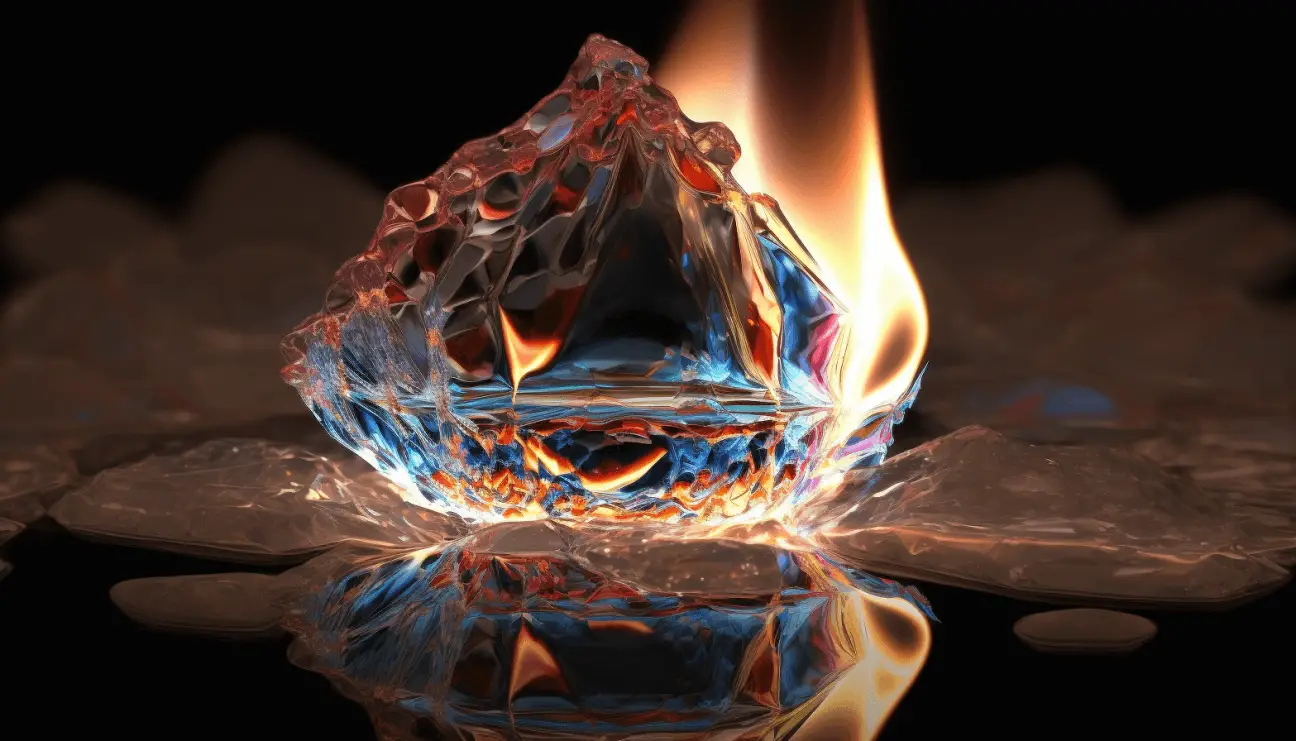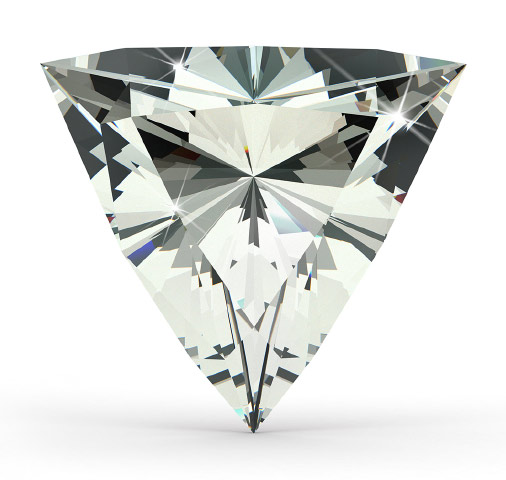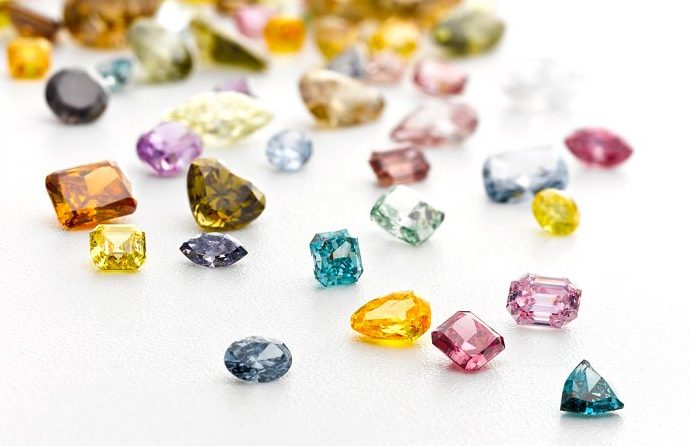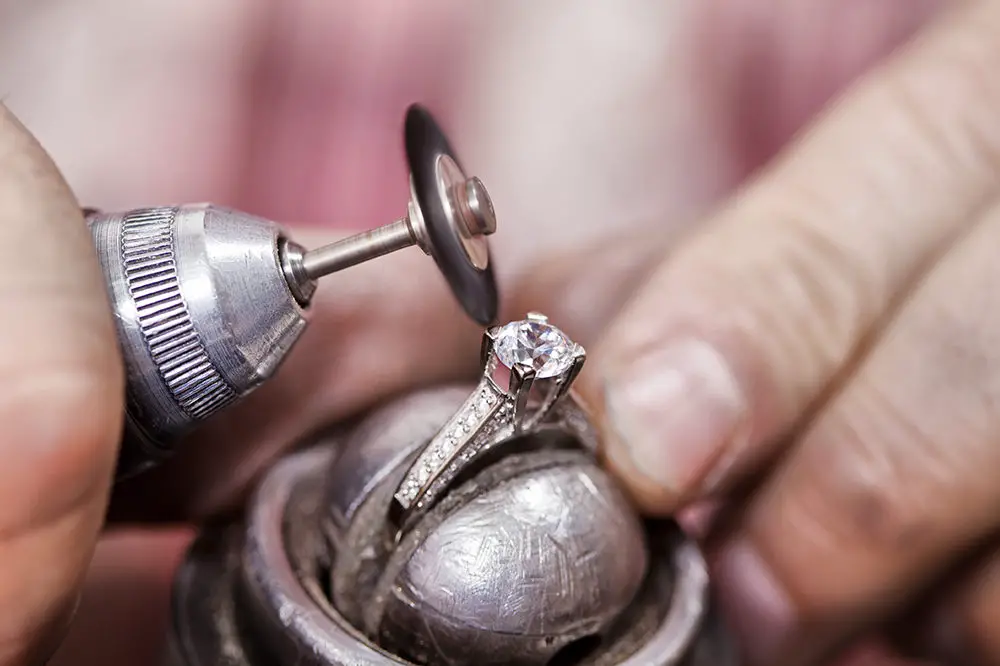The Melting Point of Diamond: How Hot Does It Have to Get to Burn?
Have you ever wondered what would happen if you tried to melt a diamond? Diamond is one of the hardest substances on Earth. However, it turns out that diamond has a melting point just like any other material. It can even burn under certain conditions!
Diamond has a very high melting point estimated it at 7,000 degrees Fahrenheit (3,827 degrees Celsius). This high melting point is due to the strong covalent bonds between carbon atoms in the diamond crystal lattice.

From ancient myths to modern science, the melting point of diamond has long been a topic of fascination. And now we’re finally ready to uncover the truth. Get ready to learn about diamond melting! We’ll explore the science behind this gemstone and clear up centuries-old myths.
Can You Melt Diamonds?
I have to admit, I was pretty shocked when I learned about the melting point of diamonds. I mean, we all know that diamonds are pretty much indestructible, right? But as it turns out, even the toughest things on earth have their limits.
So, Can You Melt Diamonds? Well, yes! When it comes to diamonds, their melting point is actually pretty darn high – most estimates place it around 7,000 degrees Fahrenheit (3,827 degrees Celsius). That’s a whole lot of heat!
But why is diamond’s melting point so high? Well, the answer lies in its molecular structure. Diamond is made up of pure carbon atoms, which are arranged in a crystal lattice structure. The bonds between these carbon atoms are called covalent bonds, and they are extremely strong. In fact, these bonds are so strong that they are what give diamond its unique physical and chemical properties – including its high melting point.
The Scientific Basis for Diamond’s High Melting Point
The scientific basis for diamond’s high melting point can be traced back to its unique molecular structure. Diamond is made up of pure carbon atoms, which are arranged in a crystal lattice structure. The bonds between these carbon atoms are called covalent bonds, and they are extremely strong. In fact, these bonds are so strong that they are what give diamond its unique physical and chemical properties – including its high melting point.
So, how do these covalent bonds contribute to diamond’s high melting point? Well, it all comes down to the energy needed to break these bonds. When a substance is heated, the energy of the particles in that substance increases. This can cause the bonds between these particles to break, which in turn causes the substance to melt.
In the case of diamond, the covalent bonds between its carbon atoms are extremely strong, and it takes a lot of energy to break them. As a result, it takes a very high temperature to melt diamond. Most estimates place diamond’s melting point at around 7,000 degrees Fahrenheit (3,827 degrees Celsius), which is much higher than the melting point of most other materials.
In addition to its strong covalent bonds, diamond’s molecular structure also contributes to its other unique physical and chemical properties. For example, diamond is the hardest known material, and its crystal lattice structure is what gives it this hardness. Diamond is also an extremely good conductor of heat and electricity, and it is resistant to chemical attack. All of these properties are related to diamond’s unique molecular structure and the strength of its covalent bonds.
Overall, the scientific basis for diamond’s high melting point is rooted in its unique molecular structure and the strength of the bonds between its atoms. This combination of strong covalent bonds and a crystal lattice structure gives diamond its unique physical and chemical properties, which have made it one of the most valuable and sought-after materials in the world.
Methods Used to Measure the Melting Point of Diamond
Measuring the melting point of diamond might sound like a pretty straightforward task, but it actually requires some pretty advanced experimental techniques. In order to measure its melting point, scientists have to be able to generate and sustain extremely high temperatures for an extended period of time.
So, what are the methods that scientists use to measure the melting point of diamond? There are a few different techniques that have been developed over the years, each with its own set of benefits and limitations.
Differential scanning calorimetry
One common method is called differential scanning calorimetry (DSC). This technique involves heating a sample of diamond up gradually while measuring the amount of heat that is absorbed or released. By analyzing this data, scientists can determine the temperature at which the diamond begins to melt. This method is relatively simple and doesn’t require a lot of specialized equipment, but it can be time-consuming and may not be accurate at extremely high temperatures.
High-temperature high-pressure (HTHP) synthesis
Another method is called high-temperature high-pressure (HTHP) synthesis. This technique involves using extremely high pressures (up to a million atmospheres) and temperatures (up to 7,000 degrees Fahrenheit) to melt and synthesize diamond. This method is much more accurate than DSC, but it requires specialized equipment and is much more expensive and time-consuming.
Other Methods
There are also a few other methods that have been used to measure the melting point of diamond, including laser-heated diamond anvil cells (LHDAC) and shock compression experiments. Each of these methods has its own advantages and disadvantages, and scientists are still working to develop new and more accurate methods for measuring the melting point of diamond.
Overall, measuring the melting point of diamond is a complex and challenging task that requires advanced experimental techniques and specialized equipment. Despite these challenges, scientists are continuing to work on developing new methods and techniques to better understand this unique and valuable material.
Myth and Misconceptions Surrounding the Melting Point of Diamond
The melting point of diamond is a topic that has long been shrouded in myth and misconception. From ancient legends to modern-day urban myths, there are many popular beliefs about the melting point of diamonds that simply aren’t true.
It is impossible to melt: FALSE
One common myth about diamond’s melting point is that it is impossible to melt. This myth is likely based on the fact that diamond is one of the hardest and most durable materials known to man. It is also extremely resistant to chemical attack and has a very high melting point, which has led some people to believe that it cannot be melted under any circumstances.
However, this myth is simply not true. While it is true that diamond has a very high melting point (most estimates place it at around 7,000 degrees Fahrenheit, or 3,827 degrees Celsius), it is still a material that can be melted under the right conditions. In fact, diamond can be melted using specialized experimental techniques like high-temperature high-pressure (HTHP) synthesis, which involves using extremely high pressures and temperatures to melt and synthesize diamond.
It has the highest melting point over other material: FALSE
Another myth about diamond’s melting point is that it is the highest of any material. While it is true that diamond has a very high melting point compared to many other materials, it is not the highest of all materials. For example, tungsten has a melting point of around 6,170 degrees Fahrenheit (3,410 degrees Celsius), which is slightly higher than diamond’s melting point.
Overall, there are many myths and misconceptions surrounding the melting point of diamond. It is important to remember that these myths are not based in fact, and that the true melting point of diamond is determined by scientific evidence and experimentation. While diamond is a unique and valuable material with many special properties, it is still a material that can be melted under the right conditions – just like any other material.
The Bottom Line on Diamond Melting
I have to admit that I’ve always been fascinated by the melting point of diamonds. It’s such a unique and intriguing property of this precious gemstone, and there are so many myths and misconceptions surrounding it.
So, to sum up: diamond has a very high melting point, which is due in part to the strength of the covalent bonds between its carbon atoms. Temperature and pressure can also affect diamond’s melting point, and these factors must be taken into consideration when measuring the melting point of this precious gemstone.
I hope you’ve enjoyed this discussion, and I encourage you to keep learning and exploring the world of diamonds! If you have any questions, please feel free to contact me.
READ ALSO:





